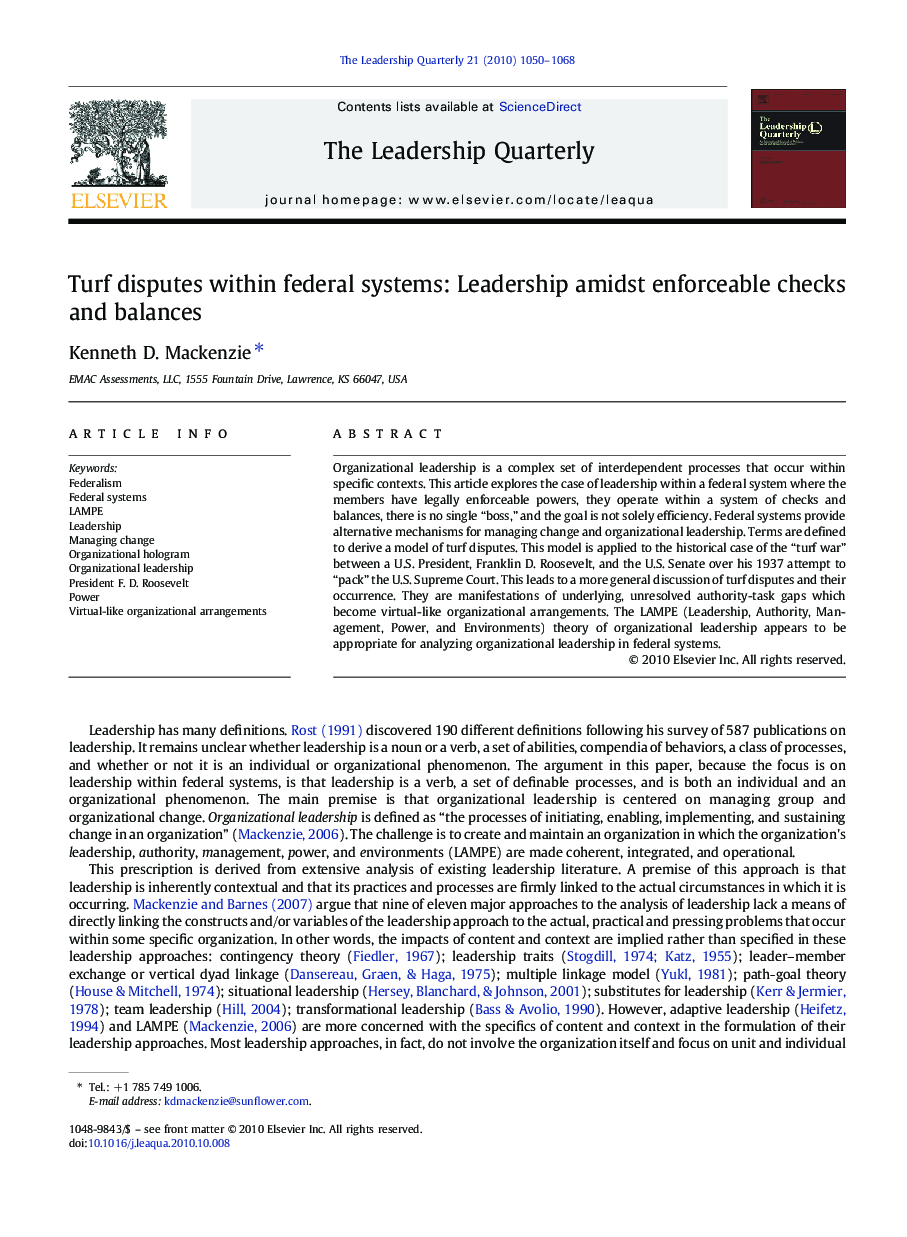| Article ID | Journal | Published Year | Pages | File Type |
|---|---|---|---|---|
| 888149 | The Leadership Quarterly | 2010 | 19 Pages |
Organizational leadership is a complex set of interdependent processes that occur within specific contexts. This article explores the case of leadership within a federal system where the members have legally enforceable powers, they operate within a system of checks and balances, there is no single “boss,” and the goal is not solely efficiency. Federal systems provide alternative mechanisms for managing change and organizational leadership. Terms are defined to derive a model of turf disputes. This model is applied to the historical case of the “turf war” between a U.S. President, Franklin D. Roosevelt, and the U.S. Senate over his 1937 attempt to “pack” the U.S. Supreme Court. This leads to a more general discussion of turf disputes and their occurrence. They are manifestations of underlying, unresolved authority-task gaps which become virtual-like organizational arrangements. The LAMPE (Leadership, Authority, Management, Power, and Environments) theory of organizational leadership appears to be appropriate for analyzing organizational leadership in federal systems.
